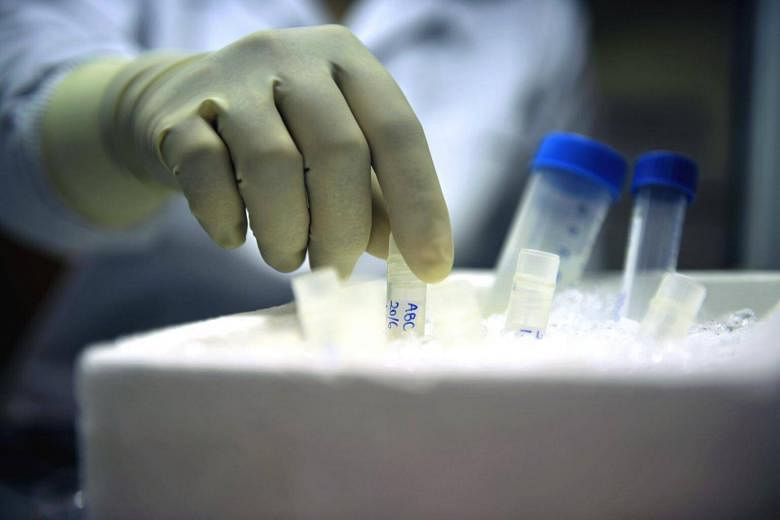SINGAPORE - The Bioethics Advisory Committee has to consider the dilemmas associated with a new technology which allows a child to be born without serious genetic defects, but with three genetic parents.
Mitochondrial genome replacement technology involves combining the genetic material (DNA) of a couple - who would otherwise be unlikely to have healthy children of their own - with that of a female egg donor.
That would mean the child would have the genetic make-up of three people, although the donor's contribution would account for less than 1 per cent of the child's DNA.
Even though the technology is still in its early stages, Singapore needs to start a conversation about it, said former senior district judge Richard Magnus, who leads the committee.
"Singapore needs to be able to do good science; ethical science," he said. "We want to be able to provide and get ready a framework of legal, ethical and social principles with regard to the science of it."
Formed in 2000, the committee makes recommendations to the Government on the regulation of human biomedical research. It has launched a public consultation to discuss the issues related to the treatment. The public consultation starts on Friday (April 20) and ends on June 15.
Most inherited DNA is found in the nucleus of human cells. However, some is also found in structures outside the nucleus, which are known as mitochondria.
-
What the genome replacement tech involves
-
These are some of the ethical, legal and social issues posed by mitochondrial genome replacement technology:
Q: Who is mitochondrial genome replacement therapy for?
A: The technology may be the only chance for women with a high risk of passing on mitochondrial disorders to have a baby that they are genetically related to.
The consultation paper by the Bioethics Advisory Committee says choosing to have one's own child through these methods - rather than adopting a child or using a donated egg - could be argued as an exercise of reproductive autonomy, which should be respected.Q: Does it mean that a child will have three parents?
A: A child born through these methods will have the genetic make-up of three people - two women and a man.
However, the complete set of mitochondrial DNA: - which is contributed by the female donor - only amounts to 37 genes. In comparison, the nuclear genome - the set of DNA: found in a cell's nucleus - has between 20,000 and 22,000 genes.
It could also be argued that the definition of parenthood extends beyond just genetics.
Q: What about the potential impact on children born through this new method?
A: As the mitochondrial genome replacement technology is so new, nobody knows if it could cause health problems in children conceived through it, especially in the long term.
Scientists cannot completely rule out the possibility that the mitochondrial disorders that this technology is supposed to prevent may still occur.
This mitochondrial DNA is inherited only from a baby's mother, and as far as scientists are aware, do not affect a person's physical or personality traits. Abnormalities in this type of DNA can cause serious problems, as mitochondria produce energy that cells need to function.
Most healthy people have a certain amount of abnormal mitochondrial DNA. However, because a randomly selected portion is passed on, a child may end up with a large amount of abnormal DNA.
These typically affect the heart and nervous system, and can contribute to epilepsy, blindness, deafness and some form of mental deficiency.
In severe cases, it can involve multiple organs, and lead to an early death.
The technology aims to solve this problem by combining nuclear DNA from a woman who is at risk of passing on such a disorder, with the healthy mitochondrial DNA found in a donor's egg.
Britain was the first country to legalise this technology in 2015. However, the technique is so new that no formal clinical trials have been conducted among humans yet.
Since 2016, three babies have been born - one in Mexico and two in Ukraine - using this technology, but their current health status is unknown.
In Singapore, research involving human eggs and embryos is restricted under the Human Biomedical Research Act.
However, the committee is relooking the issue in the light of recent scientific advancements and their potential to help prevent serious mitochondrial disorders.
The committee will talk to scientists, doctors, members of institutional ethics review boards and representatives from religious organisations to get their views on the topic.
It will also be holding a public dialogue on April 28 at the National Library, between 2pm and 4pm.
Those interested in attending the session can contact the committee at bioethics_singapore@moh.gov.sg.


